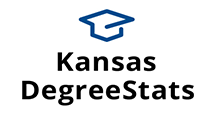PRATT COMMUNITY COLLEGE
Bloodborne Pathogen Exposure Control Plan
(Reviewed/Revised September, 2018)
Pratt Community College, in compliance with the Kansas Department of Human Resources (KDHR), Kansas Department of Health and Environment (KDHE) guidelines, and the Occupational Safety and Health Administration (OSHA) standard, is committed to the prevention of incidents or happenings which result in employee injury and illness. The college adopts this procedure to insure a safe work environment for its employees.
Individual departments having employees with occupational exposure to human blood are encouraged to establish an Exposure Control Plan that is designed to eliminate or minimize the employee or student exposure that is unique and specific for each area.
PURPOSE
The purpose of this exposure plan is:
- To eliminate or minimize occupational exposure to blood or other body fluids.
- To identify employees occupationally exposed to blood or other potentially infectious material
- (OPIM) in the performance of their regular job duties.
- To provide employees exposed to blood and OPIM pertinent information on follow-up procedures, and to provide training for knowledge of bloodborne pathogens and prevention.
- Bloodborne Pathogens Exposure Control Plan is located on the PCC common drive I: Procedures and the PCC website Human Resources page.
EXPOSURE DETERMINATION
Occupational exposure is skin, eye, mucous membrane or parental (piercing mucous membranes or skin barrier through needle sticks, human bites, cuts, abrasions, etc) contact with blood or OPIM including body fluids such as semen, vaginal secretions, respiratory discharge, tears, vomitus, urine, feces and saliva.
A category assignment is made for all common job classifications to determine potential exposure risks that may be expected to occur during routine job tasks. This exposure determination is made without regard to use of Personal Protective Equipment (PPE).
- Category 1—employee performs tasks that involve exposure to blood, body fluids or tissues.
- Category 2 –employee normally performs tasks that do not involve exposure to blood, body fluids or tissue: however his/her work may require the unplanned performance of such tasks.
- Category 3 –employee does not perform tasks that require contact with blood, body fluids, or tissue
See attachment 1 for category list.
See attachment 2 for listing of tasks involved with possible occupational exposure
COMPLIANCE METHODS
1. Universal precautions
The college embraces universal precautions which are a method of infection control that requires the employer and employee to assume that all human blood and specified human body fluids are infected with bloodborne pathogens (e.g. Human Immunodeficiency Virus or HIV, Hepatitis B Virus or HBV and Hepatitis C Virus or HCV). When it’s difficult or impossible to identify body fluids, the fluids are to be considered potentially infectious.
2. Engineering controls and work practices
Engineering controls help protect employees from exposure. These controls must be examined and maintained on a regular basis.
A. Hand washing
- Hand washing facilities are provided to all students and staff. Hands will be washed following any exposure. If this provision is not feasible, an appropriate antiseptic hand cleanser will be utilized until hand washing is accomplished.
- Wash hands with soap and water for two minutes as soon as possible after glove removal or direct contact of hands or skin with blood or OPIM.
- Flush membranes with water immediately or as soon as feasible following contact with blood or any other potentially infectious material.
B. Needle Safety
- Only closeable, puncture resistant, leak proof containers labeled with biohazard sign will be used for the disposal of all sharps.
- Contaminated needles and other sharps shall not be bent, recapped or removed unless it can be demonstrated that no alternative is feasible. This should be accomplished through the use of a mechanical device or a one-handed technique.
- Contaminated reusable sharps shall be placed in appropriate containers until properly processed.
- Safer medical devices such as sharps with engineered sharps injury protections and needleless systems will be used where feasible. These systems will be evaluated in the individual departments.
C. Personal Protective Equipment (PPE)
- The college will be responsible for ensuring and issuing appropriate and readily accessible PPE without cost to the employee.
- Gloves, masks, eye protection, and body protection will be provided and utilized by employees when there is risk for occupational exposure. This equipment may be obtained by contacting the College Health Nurse or the Director of Buildings and Grounds. In addition, Biohazard kits containing minimal PPE, supplied by college health, can be found in the locations listed in attachment 2.
- Equipment will be chosen based on the anticipated exposure to blood or OPIM.
D. Contaminated equipment
- Equipment that may become contaminated with blood or other potentially infectious materials is to be decontaminated with bleach or other disinfectant as soon as is feasible.
- Contaminated equipment or items should not be stored, placed or decontaminated in areas where food and drink is kept.
- Cloths utilized for cleaning contaminated areas may be discarded in regular trash unless contamination is to the extent they are considered regulated waste.
E. Regulated waste
- Regulated waste includes gloves, cloth or body protection which has been contaminated to the extent of being saturated with blood or other potentially infectious material (OPIM). The contaminated items should be placed in red bags marked with bio-hazard indicator.
- Approved sharps containers will be sealed prior to processing for disposal and will be disposed of by the College Health office.
- Disposal of waste will be completed in accordance with state and local laws by the Facility Management area. In the event the waste item requires handling by a medical waste disposal company, the arrangements will be made by the Facility Management area.
F. Work area eating restrictions
In areas where there is reasonable likelihood of exposure to blood or OPIM, employees are not to eat, drink, apply cosmetics or lip balm or handle contact lenses. Food and beverages are not to be kept in refrigerators or freezers, shelves, cabinets, or counter tops where blood or OPIM are present.
G. Housekeeping and laundry
Facility will be cleaned utilizing approved cleansers and disinfectants as determined and scheduled by the Facility Management area. List of approved disinfectants is available in the Facility Management area. Work areas and surfaces should be cleaned and disinfected with appropriate disinfectant as soon as is feasible following contamination by blood or OPIM.
Blood and body spills should be cleaned using a fresh solution of 10% bleach (1:10 mix) or EPA approved disinfectant. Care should be taken in the handling of contaminated disposed materials. If possibility of leakage due to excess liquids, item may require double bagging.
Broken glass will not be handled directly with hands. Mechanical means such as brush, tongs, forceps and dustpan will be used. Glass will be disposed in a sharps container.
Contaminated laundry will be handled as little as possible. Linens shall be bagged at the location and secured prior to transport to laundry area. Gloves will be worn when handling soiled linen.
H. Labeling
The universal biohazard label is required for contaminated items and waste. The label is fluorescent orange with letters or symbols in a contrast color and should be affixed to the container in a method that prevents its loss or unintentional removal.
Items requiring biohazard labels include:
- Containers of regulated infectious waste
- Refrigerator and freezers containing blood or OPIM
- Contaminated equipment being sent for repair or maintenance (label must indicate which portion of equipment remains contaminated)
Items not required to have a biohazard label include:
- Red bags or containers (red bagging is an acceptable substitute)
- Regulated waste that has been decontaminated
Labeling of items will be the responsibility of individuals in charge of the specific areas.
HEPATITIS B VACCINATION and POST-EXPOSURE EVALUATION and FOLLOW-UP.
- The college will offer the Hepatitis B vaccination series to personnel with duties specified as a Category 1.
- Post-exposure evaluation and follow-up following an exposure incident will be offered to ANY employee who suffers an exposure incident while performing duties at the College. All medical evaluations and procedures including Hepatitis B vaccine and prophylaxis medications will be available at no cost to the employee. This will be received through the Pratt County Health Dept. or the individuals’ private physician and according to recommendations of the Center of Disease Control (CDC). In the event that a possible exposure occurs outside of regular business hours, or at an off-site campus/clinical area, the employee should seek medical evaluation and assistance at the nearest medical emergency facility.
A. Hepatitis B Vaccine
The Pratt County Health Department offers the Hepatitis B vaccination. Human Resources will direct the employee to this service if indicated.
- All category 1 employees will be offered the Hepatitis B vaccine and vaccination series after required bloodborne pathogen training has been completed and within 10 working days of initial assignment involving the potential for occupational exposure. No pre-screening prior to the vaccine will be required.
- Employees, after training, may decline to receive the vaccine for various reasons e.g. previously vaccinated, medical contraindications, documentation of immune status or choice. In such cases, a declination statement, or waiver, must be signed. Anytime after signing the declination statement the employee may receive the vaccine if a change of mind occurs and the duties still involve a category 1 occupational exposure. This is at no cost to the employee.
B. Post-exposure Evaluation and Follow-Up
- In the event of a possible exposure incident with blood or OPIM, the employee is to immediately wash any skin with soap and water and flush mucous membranes with water.
- The employee should immediately (preferably within 1 hour but no later than 24 hours) seek medical attention with Student Health Services and/ or their own physician for evaluation. The initial evaluation will determine whether a true blood or body fluid exposure has occurred. The Student Health Nurse will facilitate making arrangements for services required that are not available on campus and will ensure compliance. An exposure incident requires immediate attention as the effectiveness of the prophylaxis depends on timely delivery. It is imperative to begin treatment within 24 hours of exposure.
- The incident must be reported to the supervisor as soon as possible and an incident report form filed with Human Resources.
- Follow-up procedure will include a confidential medical evaluation with documentation including the circumstances of exposure, identifying and testing the source individual if feasible, testing the exposed employee’s blood with consent, post-exposure prophylaxis, counseling and evaluation of reported illness.
- Counseling will be provided prior to tests being run. It will include precautions to take during the period following exposure, information on potential diseases and symptoms, and information about reporting any related illnesses to the Student Health Nurse.
- To facilitate the evaluation, the Healthcare provider must be given specific information including circumstances of exposure, route of exposure, the employee’s Hepatitis B vaccine status, other relevant medical information, and if indicated and possible the information on the source person. A written opinion within 15 days of the completion of the evaluation will be provided by the healthcare provider..
- Student Health Services will provide the employee a copy of the written opinion upon receiving it.
- The healthcare professional’s written opinion for HBV vaccination will be limited to whether HBV is indicated and/or has been received by the employee.
- The written opinion for post-exposure follow-up will include information for the employee on the results of the evaluation and any medical condition resulting from the exposure which requires further evaluation or treatment.
- Tests for the employee include, but may not be limited to, HBV, HCV and HIV.
- The blood of the source individual will be tested for HIV, HCV and HBV only after consent is given for the testing and release of information is obtained.
- Charges for the source individual’s initial lab tests will be covered by the College. If it is determined further testing is required or treatment is needed, the expense will be source individual’s responsibility.
- It will be the exposed employee’s duty to maintain confidentiality of the source individual’s name and serology reports according to Kansas Law.
- All findings and diagnosis will remain confidential and not included in the written report.
MAINTAINENCE OF MEDICAL RECORDS
Student Health will maintain confidential records of the Hepatitis B vaccination and/or records relevant to the ability to receive the vaccine. Also, any post-exposure and follow-up medical files for the duration of the employee’s employment plus 30 years. The post-exposure and follow-up files will not be released without the employee’s express written consent, unless required by Kansas law. Accurate records will be established and maintained for each employee with an exposure occurrence.
Information to be included in each record:
- Name and Employee ID number
- Copy of Hepatitis B vaccine status including dates of vaccination and/or records relevant to the ability to receive the vaccine.
- Copy of all results of exams, medical testing and follow-up procedures
- Copy of health provider’s written opinion about the exposure
- Copy of information provided to health care provider when employee sent for exposure assessment and care.
TRAINING
Bloodborne Pathogen training will be provided to all Category 1 and 2 employees with occupational exposure risk, at no cost to the employee. Participation in the training is mandatory and must occur prior to initial assignment to tasks where occupational exposure may occur.
Annual training will be provided for Categories 1 and 2 employees. Individual departments having employees with occupational exposure to human blood are encouraged to establish an Exposure Control Plan that is designed to eliminate or minimize the employee or student exposure that is unique and specific for each area.
The training program will include the following elements:
- Overview of the OSHA standards and location for the standard for review.
- Epidemiology and symptoms of bloodborne diseases.
- Modes of transmission.
- PCC Exposure Control Plan and location.
- Procedures that may involve exposure to blood and OPIM’s
- Control measures including engineering controls, work practices and PPE’s to prevent exposure.
- Information on the types, selection, proper usage, location, removal, handling, decontamination and disposal of PPE’s.
- Pre-exposure Hepatitis B vaccination program with information on vaccine’s efficiency, safety, method of administration and the benefits of being vaccinated.
- Post-exposure reporting, medical evaluation and follow-up.
- Hazardous labels and signage.
At the time of training, employees will have the opportunity to ask questions. Information will be conveyed by an interpreter or other appropriate method of education to any employee proficient only in a foreign language or with a disability.
Employees requiring the annual training will be provided with a post-test. If a passing score is received, no further training will be required. Additional training will be available to those not receiving a passing score or desiring a refresher course. Availability for questions and answers will be provided.
Training Records
All training session records will be maintained by Human Resources for a period of 3 years from the date the training occurred. Employee training records will be made available for inspection to employees, anyone having the written consent of the affected employee, and to KDHR upon request.
Information will include:
- Date of training
- Summary of training session
- Names and qualifications of persons conducting the training
- Names of all persons attending the training
ACCESSIBLITY AND REVIEW
The Exposure Control Plan will be available to all employees on the Human Resources Web page. The plan will be reviewed annually or as needed to reflect changes and effectiveness. Updates will reflect new or modified tasks which affect occupational exposure or which reflect changes in employee positions. The Student Health Nurse will be responsible for scheduling the reviews.
ATTACHMENT 1
Job Classification---categories
CATEGORY 1
Student Health Nurse
Faculty from following departments:
- Nursing including RN, LPN, CNA, CMA
- Emergency Medical Services
- Allied Health Programs
- Athletic trainers
Student employees in lab areas of the above mentioned departments
CATEGORY 2
Student Housing
Security
Custodial Staff
General Facility Management Staff
Bus Drivers
Athletic Coaches
Wellness (fitness) Center Staff
Faculty and staff from following departments:
- Science labs
- Automotive/Ag power technology
- Agriculture
- Electrical Power Tech. programs
- Ceramics
CATEGORY 3
- Administrators
- All office staff
- All remaining faculty
ATTACHMENT 2
TASKS INVOLVING POSSIBLE OCCUPATIONAL EXPOSURE RISK
- Contact with body secretions during daily activities.
- Cleaning, bandaging scrapes, cuts, abrasions.
- Administering 1st aid.
- Handling of Biohazardous materials
- Contact during maintenance of a sanitary environment.
- Handling upset and/or uncooperative individuals.
- Processing of soiled laundry.
LOCATIONS FOR BIOHAZARD KITS
- Custodial Office
- Cafeteria (office)
- Gwaltney Hall
- Residence Halls (1 each, hall supervisor)
- Switchboard
- Library
- Athletic Trainer office
- Fitness Center
- Student Center Rec Room
- Business office
- Power lineman building
- Auto tech office
- Ag power office
- Art lab
- Auditorium (sound booth)
- Chandler Hall (skills lab)
PRATT COMMUNITY COLLEGE
HEPATITIS B VACCINE DECLINATION
I understand that due to my occupational exposure to blood or
other potentially infectious materials I may be at risk of acquiring
Hepatitis B virus (HBV) infection. I have been given the opportunity
to be vaccinated with hepatitis B vaccine, at no charge to me.
However, I decline hepatitis B vaccination at this time. I understand
that by declining this vaccine, I continue to be at risk of acquiring
Hepatitis B, a serious disease. If in the future I continue to have
occupational exposure to blood or other potentially infectious
materials and I want to be vaccinated with hepatitis B vaccine, I can
receive the vaccination series at no charge to me.
Signed: (Employee Name) ____________________ Date: ___________





